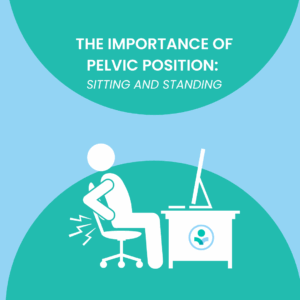Updated: Jan 12, 2023
Ergonomic Tips for Truck Drivers and Other Motor Vehicle Operators
Being mindful of your body mechanics and continuing to practice good techniques helps to prevent injuries. Limiting the movement of your body throughout the day may put you at a higher risk for a musculoskeletal disorder, which are chronic injuries to your muscular and skeletal system due to unsafe body mechanics and positioning or repetitive motions.
Ergonomics plays a role throughout all our daily routines, even while driving. Truck drivers and other motor vehicle operators are at risk for injury because of a possible sustained seated position, vibrations from vehicles, and heavy lifting with loading and unloading to name a few.
Before Driving
The ergonomic goal for truck drivers and other motor vehicle operators is to adjust the settings in your vehicle to help maintain a neutral and upright posture. A supportive chair and our own muscles make a great team to keep us upright. Muscles can remain active and support us for short periods of time. Muscles easily fatigue after prolonged postures with minimal to no support. When our muscles fatigue and are no longer able to keep us upright, it is important to have our surroundings supporting us to reduce discomfort. Being safe on the road means making the following adaptations and changes before you start driving.
- Keep back pockets free of wallets, phones, etc. This will help keep your hips and spine in a neutral and well-supported position.
- Allow your knees and hips to be bent at 90-100 degrees. If possible, do not allow your knees to be at a higher level than your hips.
- Provide 1-2 inches of space between the back of your legs and the front of the chair. The back of your knee should not be pressing firmly on the front end of your chair.
- Position your chair to fully support your back from your buttocks up to your shoulder blades without any hollow spots in between your back and your chair.
- Adjust the lumbar support of your chair to support your back. If needed, use a small towel roll to support your lumbar spine.
- Angle the steering wheel to keep your elbows close to your sides but not touching. This helps to keep your arms in your comfort zone and minimize an extended reach.
While Driving
Staying focused and attentive to your surroundings is ideal when you are driving. When it comes to ergonomics the above recommendations are a great starting point. The next step is to safely add a little movement to your driving routine. Adding movement or changing positions can help to engage other muscle groups in your body so the primary group of muscles can get a break. While keeping your eyes on the road consider these other tips.
- Vary your seat position slightly every 30-60 minutes. This helps to reduce stress on your body and will help engage different muscles.
- Change your hand position on the steering wheel often. The most frequent hand position should be 8 and 4. This allows your upper extremities to remain in your comfort zone and is also a safe position in case your airbags deploy. Slightly moving your hands anywhere from 9 to 7 and 3 to 5 is also an option. Avoid placing a hand at 12 unless you are reversing.
- Fine-tune your mirrors so you can see all of them without slouching or twisting. Use the mirrors as a cue to sit up in case you happen to slouch, instead of readjusting the mirrors to accommodate your slouched position.
- Hold the steering wheel comfortably with your fingers. Do not squeeze the steering wheel harder than necessary.
Other Considerations
There are often changing variables when driving; from routes traveled, and items being hauled to changing weather conditions. When you are driving for either a short or long period of time, these ergonomic tips are great to implement into your day.
- Dress appropriately when going from a warm truck to cold outdoor weather. Muscles are more likely to stiffen when they are cold. Before you step out into the cold, wear a warm jacket to protect yourself from the cooler temperatures.
- Stay hydrated and eat plenty of fruits and vegetables to help give your body the nutrients it needs. For every cup of coffee you drink, drink at least a cup of water as well.
- Wear gloves with anti-vibration and gription technology to reduce vibration and decrease the amount of force needed to grip the steering wheel.
- After getting out of the truck, march in place or walk around the truck for 1-2 minutes to improve your circulation. Once this has happened and your body is warmed up, you can complete some stretches to help improve and maintain your overall health. Complete these stretches before getting back into your truck, especially if at least an hour has passed.
Implementing new habits and routines takes time. Adding all the above recommendations does not need to happen in one day. Start by adding a couple of these ergonomic tips into your day at a time. When you are successful with your first two choices, you can add additional healthy habits. Happy driving and safe travels from Alter Ergo to you!
Check out our YouTube video below for a visual representation of the blog!



